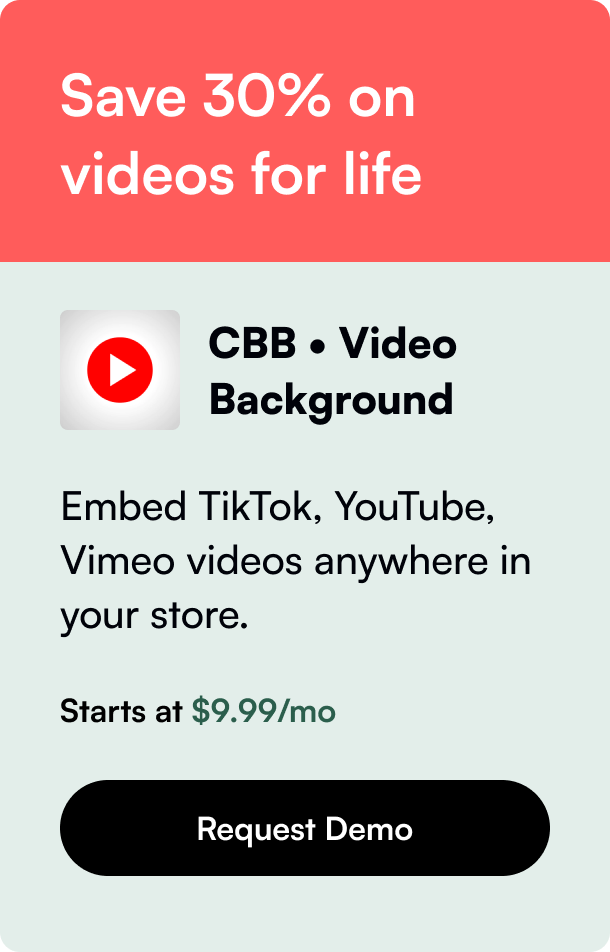Table of Contents
- Introduction
- What are WebP Images?
- Benefits of WebP Images
- Does Shopify Support WebP Images?
- Potential Drawbacks
- Optimizing Images for Shopify
- Conclusion
- Frequently Asked Questions
Introduction
Imagine a world where your online store's images load in the blink of an eye, no matter the speed of your internet connection. This isn't just a pipe dream; advancements in web technology are making it possible. One such innovation that’s creating a buzz among Shopify store owners is the support for WebP images. But does Shopify really support WebP images, and if so, what does that mean for your ecommerce venture? This blog post is your one-stop shop to understand everything about Shopify's compatibility with WebP images, exploring the nuances of image optimization, and how you can leverage this to enhance your store's performance and user experience.
In this deep dive, we'll explore what WebP images are, their benefits, how these images work on Shopify, and much more. We aim to clear up any confusion, ensure you're equipped with the knowledge to make informed decisions, and perhaps even give your store a competitive edge.
What are WebP Images?
WebP is an image format developed by Google that offers superior compression and quality characteristics compared to traditional formats like JPEG and PNG. This means WebP images are smaller in file size but don’t compromise on quality, making them perfect for the web. They support transparency, like PNGs, and also animations, which makes them incredibly versatile.
Benefits of WebP Images
- Reduced Load Times: Smaller file sizes mean your images load faster, contributing to quicker site performance and enhanced user experience.
- Improved SEO: Site speed is a ranking factor for Google, so faster loading times can contribute to better search engine rankings.
- Enhanced User Experience: A faster website provides a more enjoyable browsing experience, potentially reducing bounce rates and increasing conversions.
Does Shopify Support WebP Images?
Yes, Shopify has embraced the WebP format. Recognizing the format's advantages, Shopify has integrated WebP in a manner that optimizes performance without sacrificing user compatibility. When you upload JPEG or PNG images to your Shopify store, the platform automatically converts and serves these images in WebP format to browsers that support it. This seamless integration ensures that all users, regardless of their browser's capabilities, receive the best possible version of your store's images.
How Shopify Implements WebP
Shopify smartly uses WebP images by automatically converting uploaded JPEGs and PNGs to WebP format for browsers that support it. If a browser does not support WebP, Shopify falls back to the original format, ensuring compatibility across the board. This happens behind the scenes, requiring no additional effort from store owners, making the process as streamlined as possible.
Checking WebP Implementation on Your Shopify Store
To verify if your Shopify store serves WebP images, you can use tools like Google Chrome's Developer Tools. By inspecting the network requests for your store’s images, you can see if they are being served in WebP format to supported browsers.
Potential Drawbacks
While the benefits of WebP are clear, there are a few considerations to bear in mind:
- Browser Support: Not all browsers support WebP, but Shopify's automatic fallback ensures this is not a major issue.
- Editing and Compatibility: Some older image editing software may not fully support WebP, requiring conversions for editing purposes.
Optimizing Images for Shopify
Beyond WebP, optimizing your images for the web is crucial. Here are some best practices:
- Use Descriptive Filenames: Help search engines understand your images and improve SEO.
- Add Alt Text: Improves accessibility and also serves as an SEO booster.
- Keep an Eye on Image Dimensions: Large images can be downscaled without a noticeable loss in quality, reducing file size.
Conclusion
Shopify's support for WebP images is a game-changer for store owners looking to enhance site performance and user experience. By automatically converting images to this efficient format, Shopify makes it easier for you to enjoy the benefits of faster loading times and improved SEO without any additional effort. The future of web images is here, and with WebP, your Shopify store is well-poised to take full advantage.
Frequently Asked Questions
Q: Will using WebP images slow down my Shopify store for users on browsers that don't support the format? A: No, Shopify automatically serves the original JPEG or PNG to browsers that do not support WebP, ensuring no negative impact on load times.
Q: Can I upload WebP images directly to my Shopify store? A: Yes, Shopify accepts WebP files for upload. However, it's worth noting that Shopify will also serve these in JPEG or PNG format to browsers that require it.
Q: How much can I expect my site's speed to improve by using WebP images? A: While the improvement can vary, WebP images are on average 25-35% smaller than their JPEG or PNG counterparts, which can significantly reduce load times, especially on image-heavy pages.
Q: Are there any tools to help convert my current image library to WebP? A: Various online tools and software options can convert images to WebP. However, for Shopify store owners, the platform's automatic conversion means you might not need to manually convert images before uploading.








